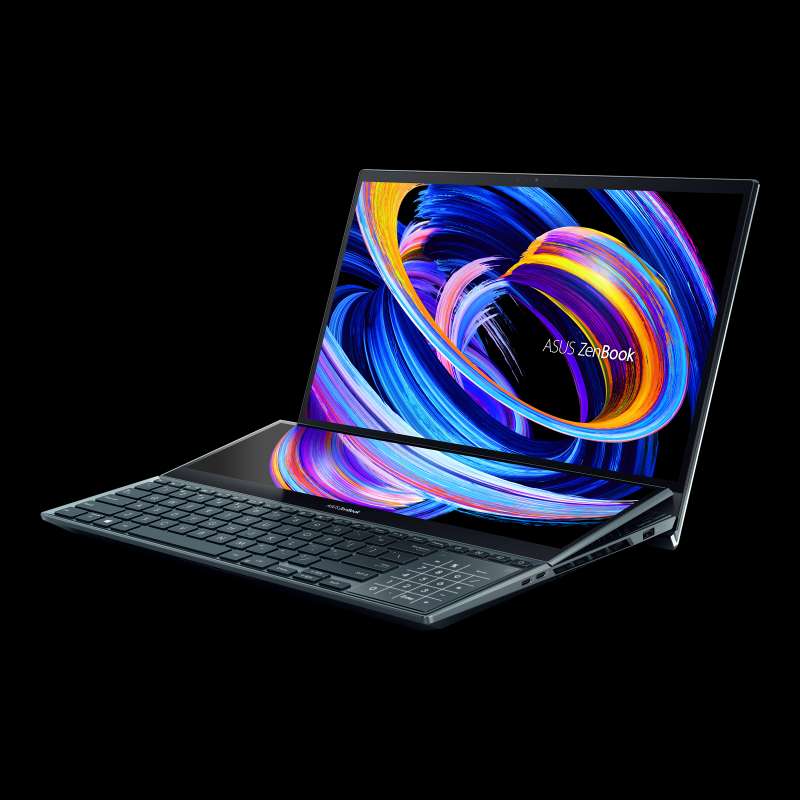Expanding OLED
The new 14” panels, which have a refresh rate of 90 Hz, are expected to appear in the recently announced Asus Zenbook, which will offer both a 4K and 2.8K option, starting at $1,400. This is a big step up in price over the Asus Zenbook 13, which offers a 13.3” FHD OLED display option for ~$800, but the 90 Hz. refresh rate is a valuable on to gamers, who are the likely buyers, so we expect the higher price might not be as much of a stumbling block to gamers as it might be to the average consumer. If there is some resistance to the higher price, the more budget oriented Asus line, the VivoBook, is expected to offer three size optional OLED screens starting at $750 and for those with deeper pockets and a flair for the dramatic can purchase the ZenBook Pro Duo 15 which has two OLED screens for a bit over $3,000.
All in, what it comes down to is that Samsung Display seems quite serious about living up to its own hype over laptop OLED displays and is following through on its commitment to expand offerings, and, as we mentioned in our July notes, is considering dedicating OLED capacity specifically for the production of RGB IT devices. There has been speculation that Samsung Display will either convert existing fab space to Gen 6 OLED production or try to build out a new production facility using new technology that would allow it to produce RGB OLED panels in a Gen 8 environment*.
The seemingly rapid adoption of this new panel size by primary producers gives more validity to either OLED expansion modality and will ramp up SDC’s ability to further dominate the RGB OLED space. While much will depend on consumer acceptance of the intrinsic value of OLED over LCD at the notebook level, if nothing else, SDC seems to have stimulated the industry’s interest in larger RGB OLED sizes and unless there is some economic or technical impediment to using OLED in notebooks (which we do not expect), we see this as an open field for OLED expansion. Expectations for OLED Notebook unit volumes and share are modest, with forecasts for this year between 3m and 4m units, or between 1.1% and 1.4% of total notebook shipments, and while up over 400% vs. the miniscule amounts produced last year, growth in 2022 is estimated to be between 55% and 80%, or between 5.6m and 6.5m units.
These are paltry numbers when compared to unit volumes for RGB OLED smartphones, where expectations for OLED smartphone unit volumes are between 590m and 630m this year, however if we model the average size of an OLED notebook in 2021 as 14.5” (9:16 aspect ratio) and the average size of an OLED smartphone being 6.5” (9:19.5 aspect ratio), the 3.5m units expected this year would be the equivalent of just under 20m smartphones, and next year’s just over 6m OLED notebook units would be the equivalent of 34m OLED smartphones, assuming no average size growth for notebooks, which will likely not be the case. As the growth in average smartphone area is close to a peak (excluding foldables), and the OLED notebook (and potentially monitor) sizes are still at the low end, that multiplier will continue to grow alongside the unit volumes, giving the RGB OLED notebook business a number of heady expansion years going forward.
*To learn more:
http://scmr-llc.com/blog/gen-8-rgb-oled-expands
http://scmr-llc.com/blog/samsung-display-the-big-oled-story-continues
http://scmr-llc.com/blog/samsung-oled-tv-update

 RSS Feed
RSS Feed